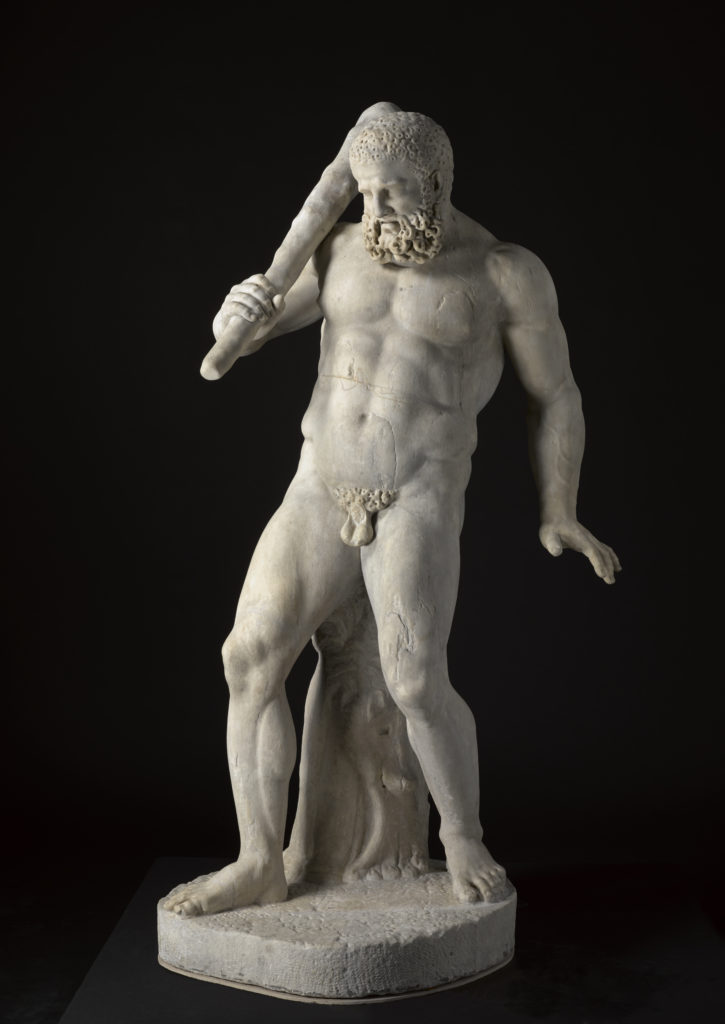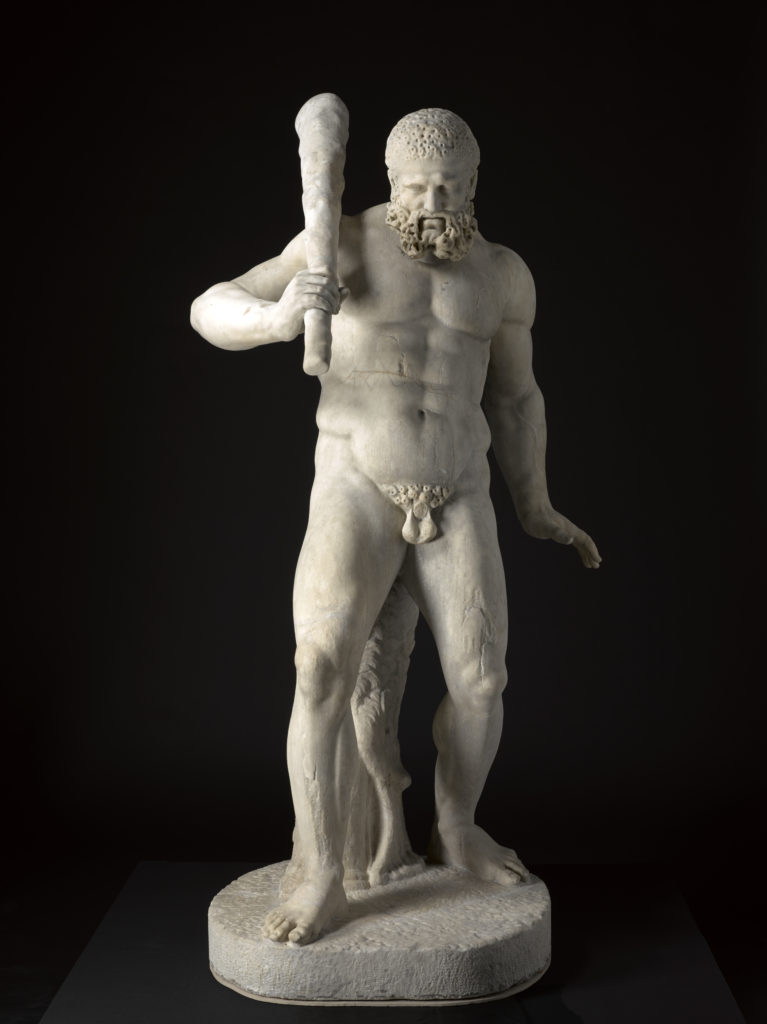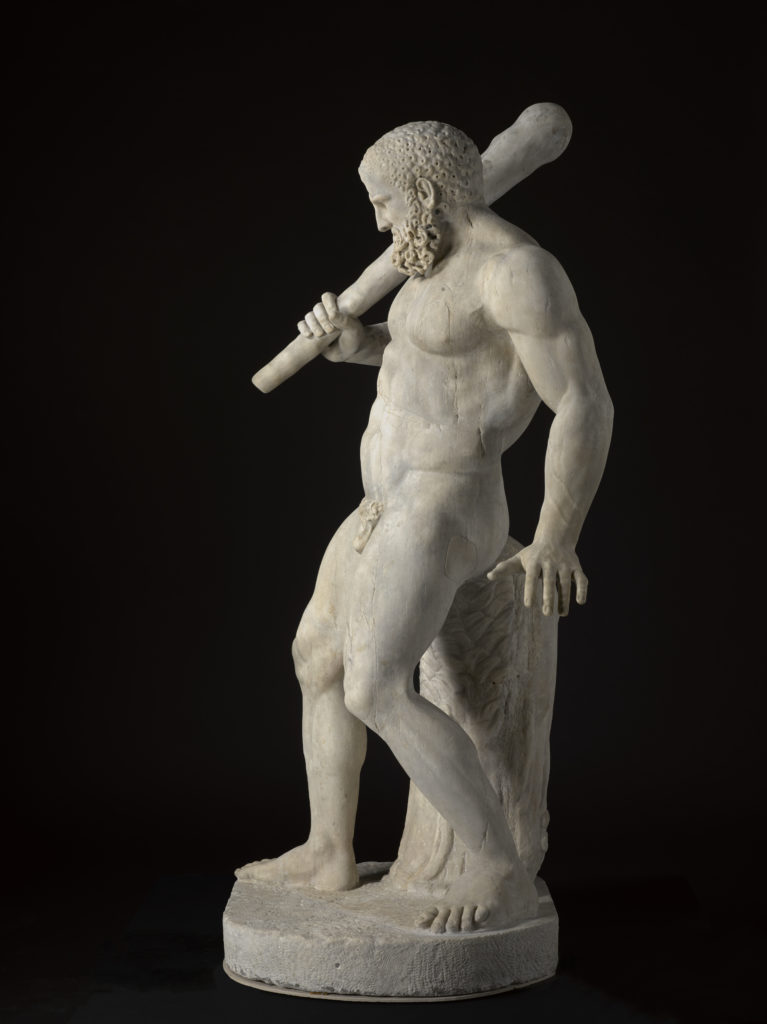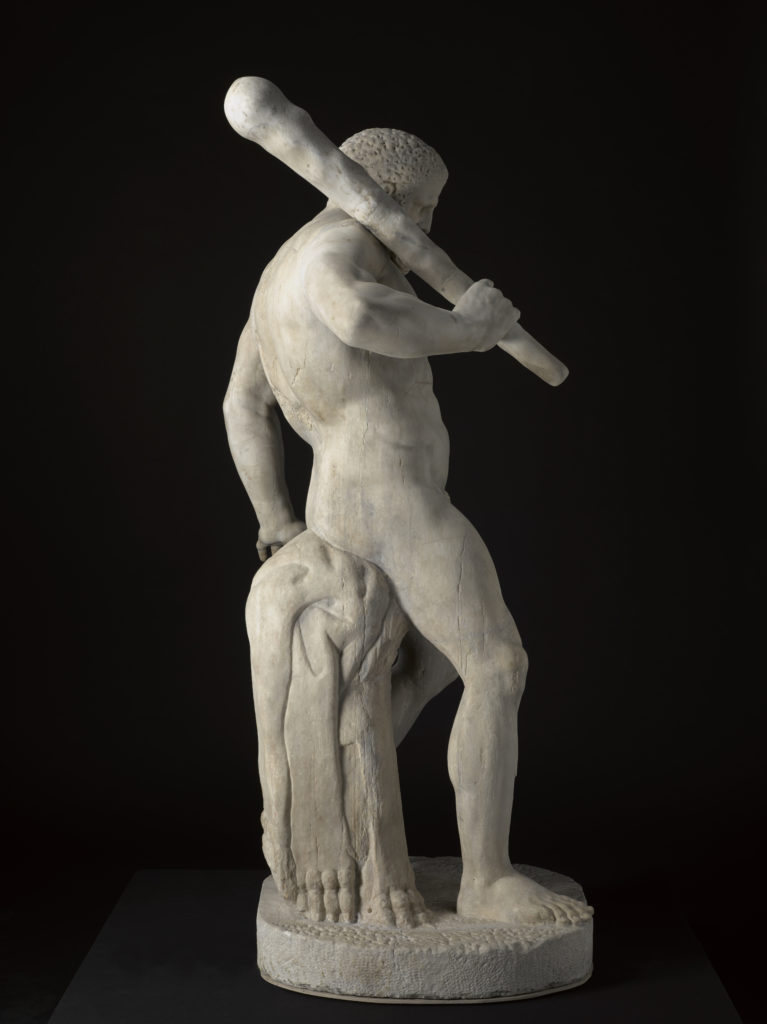Statue of Hercules (work of art)
Artwork Info
Key Ideas
- Hercules is the Roman version of the Greek hero Herakles. He is depicted as a bearded elder hero with his club over his shoulder. His posture and facial expression reveal his drunken state and his exhaustion from his adventures.
- Hercules was the son of the god Zeus and a mortal woman named Alcmena. He is best known for his 12 labors. The club and the lion skin on the tree trunk of this sculpture represent his first task: killing the monstrous lion of Nemea.
- This sculpture is made up of different pieces of marble that were made to look much older than they are. It was actually made in the late 18th century.
Learn More
This marble sculpture of Hercules (the Roman version of the Greek hero Herakles) was supposedly discovered in the Roman Forum in 1771. It was formerly known as the “Talbot” Hercules, named for Thomas Mansel Talbot, who acquired the sculpture during his Grand Tour (a so-called rite of passage for wealthy young men in the 18th century). The sculpture was displayed in Margam Castle, Wales, until the early 20th century.
The sculpture is composed of different pieces of marble that were intentionally made to look “antique.” It was sold as an important sculpture from the heart of the Roman Empire. However, the statue has recently been recognized as a late 18th-century creation that was designed to satisfy the public’s interest in ancient marble sculpture during that time.
Statue of Hercules depicts the hero in one of his less glorious moments. According to the Greek myth, the goddess of marriage, Hera, cursed Hercules to murder his own wife and children. She did this because she was resentful of him being born from the affair between Hera’s husband, Zeus, and a mortal woman named Alcmena. To punish himself, Hercules went on a journey to complete 12 labors. These labors are represented by the club and the lion skin on the tree trunk of this sculpture as reminders of his first task (the killing of the monstrous lion of Nemea). Hercules, according to mythology, was known for his excessive drinking. The posture of this sculpture, with his head lowered and his right leg forward, suggests that Hercules is walking very carefully. His restored arms are held out as if he is trying to balance himself, and the weary expression on his face depicts a hero who has endured many exhausting tasks.
tags: proportion, balance, mythology, communication, observation, power, narrative, hero
Additional Resources
Resources for Teachers:
- Learn more about the 12 labors of Hercules.
- Read an article about sculpture forgeries.
Resources for Students:
- Watch a video about the 12 labors of Hercules.
- View a Greek sculpture at the Getty Museum.




